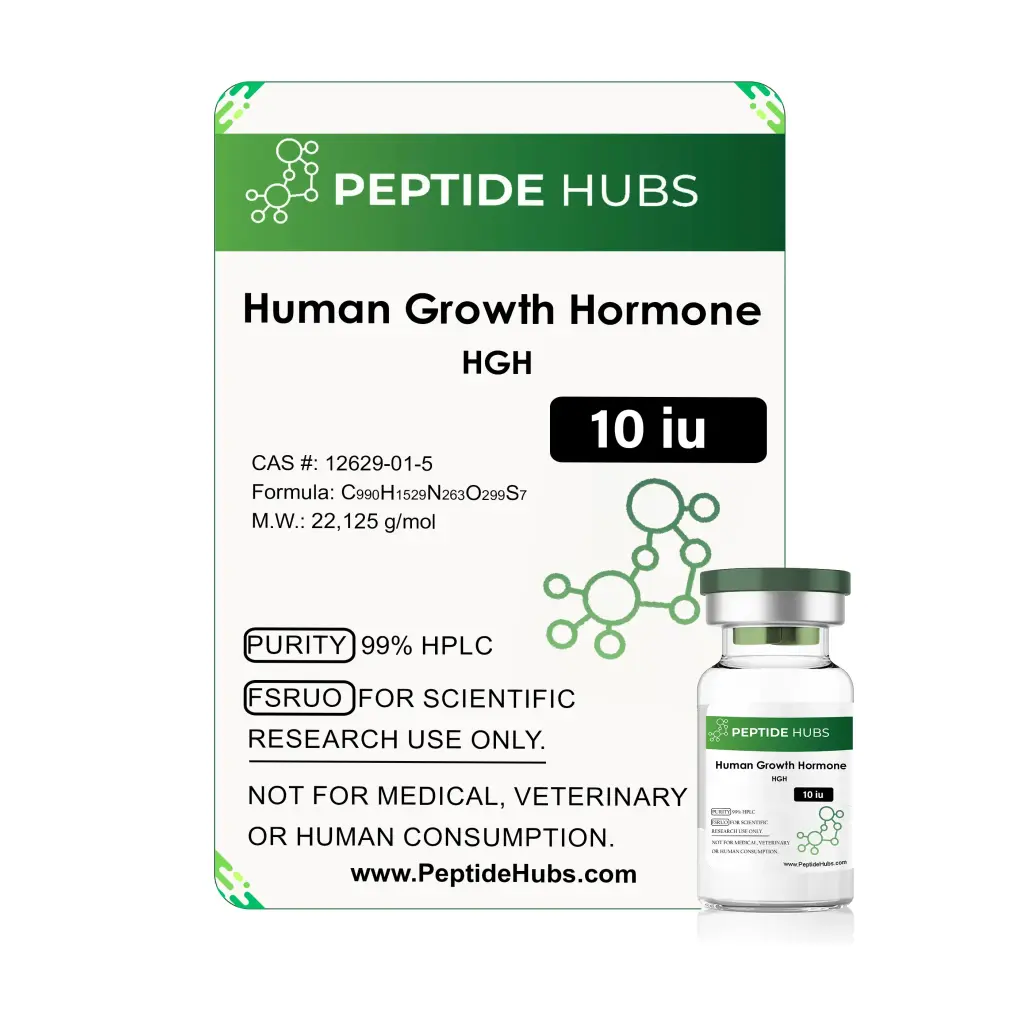
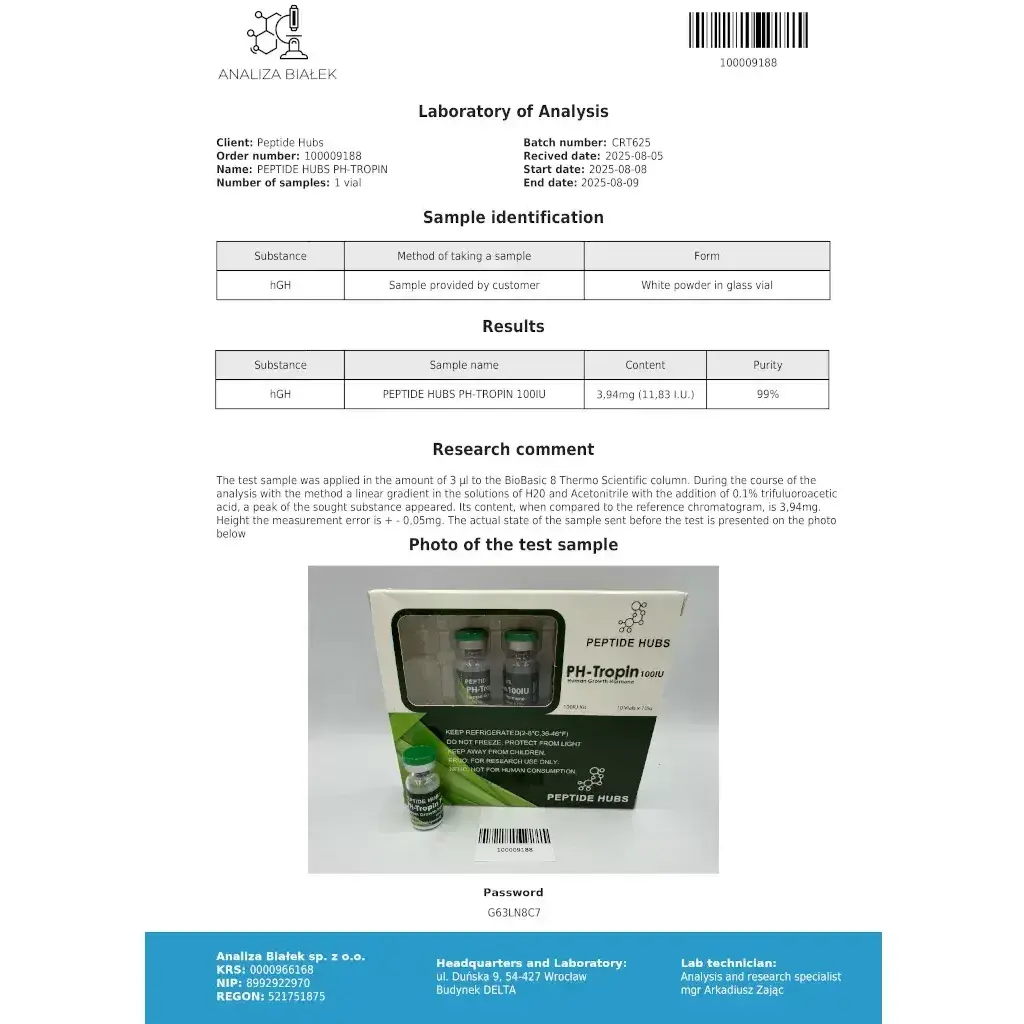


SOMATROPIN (R-HGH) 10 IU INJECTION
Drug Class: Recombinant Human Growth Hormone (rHGH)
Composition:
- Active Substance: Somatropin (r-hGH)
- Concentration: 10 IU/vial
Presentation: 1 kit [10 x 2 mL Vials]
Form: Lyophilized Powder
Manufacturer: Peptide Hubs
Tested in Laboratory: View Lab Report
Peptide Hubs introduces PH-Tropin HGH, a pharmaceutical-grade recombinant human growth hormone (somatropin) specifically formulated for research applications. Each kit contains 10 vials of 10IU lyophilized powder, providing researchers with a substantial supply for extended study periods. Our somatropin is produced using advanced recombinant DNA technology, ensuring identical structure and biological activity to endogenous human growth hormone. This premium formulation offers researchers a reliable tool for investigating muscle hypertrophy, fat reduction, recovery enhancement, and various metabolic processes.
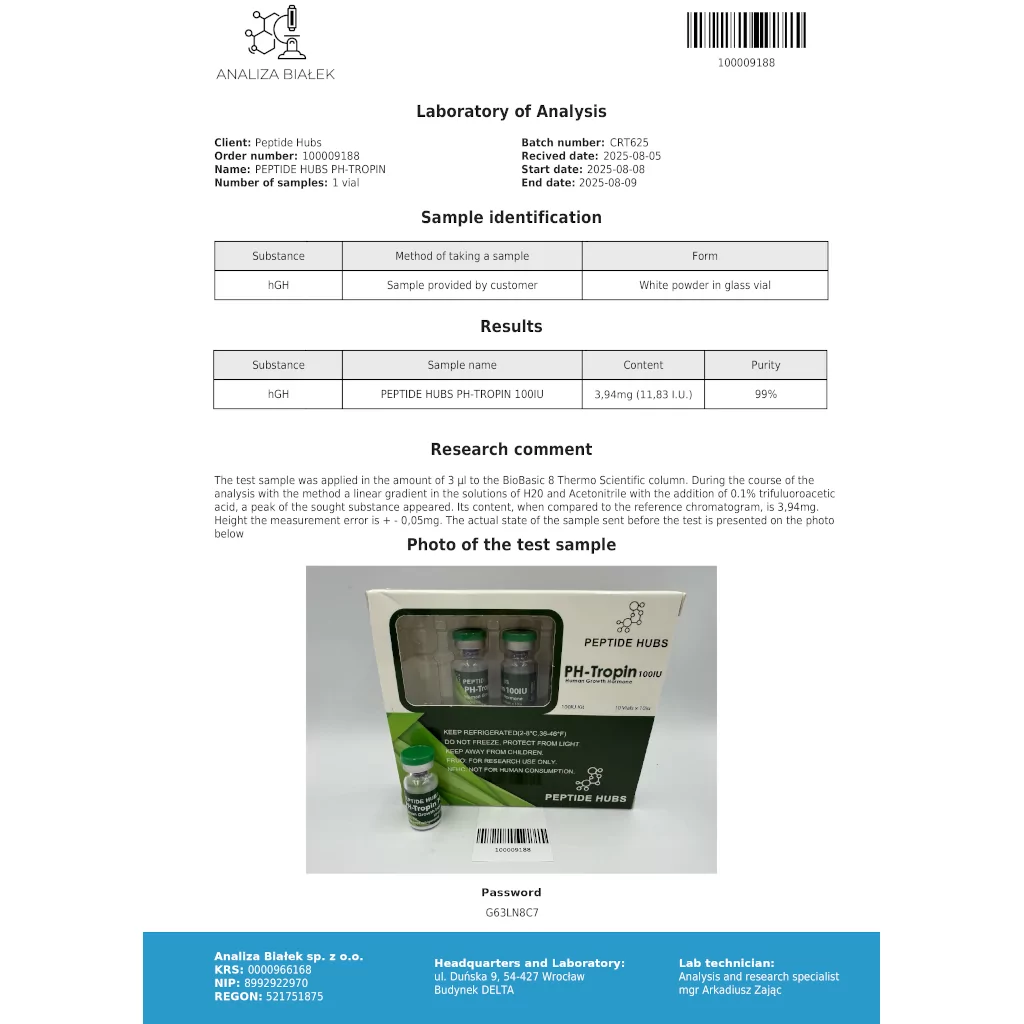
PH-Tropin HGH (somatropin) exerts its effects through direct interaction with growth hormone receptors throughout the body, particularly in liver, muscle, and adipose tissue. Research indicates that growth hormone administration promotes protein synthesis, lipolysis, and cellular proliferation while influencing carbohydrate metabolism. Clinical studies on growth hormone have demonstrated its significant effects on body composition, exercise capacity, and metabolic parameters. Specific research applications include studying its effects on increasing lean body mass, reducing adipose tissue particularly visceral fat, enhancing exercise performance and recovery, improving bone density, and supporting various aspects of tissue repair and regeneration. The recombinant nature of PH-Tropin ensures consistent biological activity and reliable research outcomes.
For research purposes, HGH dosage typically ranges from 1-6IU daily, depending on the specific research objectives and model being studied. The 10IU concentration per vial provides flexibility for various research protocols. PH-Tropin HGH should be reconstituted with bacteriostatic water supplied in the kit and administered according to established research guidelines. Most research protocols utilize daily administration, with some studies implementing divided doses to maintain more stable serum levels. Researchers should consider that lower doses (1-3IU daily) are typically used for metabolic and anti-aging research, while higher doses (4-6IU daily) are more common for studying muscle growth and body composition changes. Administration timing (morning vs. evening) may also influence research outcomes due to the natural circadian rhythm of endogenous GH secretion.
Research cycles for PH-Tropin HGH typically extend from 3-6 months to adequately study its effects on body composition and metabolic parameters. Longer cycles are generally more effective for observing significant changes in lean mass and fat reduction. Researchers often combine HGH with other compounds that enhance its effects or target complementary pathways. Popular research combinations include stacking with Insulin for nutrient partitioning studies, T3 Thyroid Hormone for metabolic rate research, Testosterone Cypionate for anabolic synergy studies, Masteron for androgen receptor research, and Anavar for mild anabolic and lipid metabolism studies. These combinations allow researchers to investigate complex endocrine interactions and synergistic effects on physique and performance parameters.
While generally well-tolerated in research settings when properly dosed, HGH administration can produce certain side effects that researchers should monitor. These may include peripheral edema, arthralgia, carpal tunnel syndrome, insulin resistance, and glucose intolerance. These effects are typically dose-dependent and often diminish with dosage adjustment or continued administration. Unlike anabolic steroids, HGH does not suppress the hypothalamic-pituitary-gonadal axis but can influence other endocrine systems. Researchers should implement appropriate monitoring protocols for glucose metabolism and other relevant parameters when conducting extended studies with growth hormone. The purity and precise dosing of PH-Tropin HGH help minimize variability and unexpected side effects in research settings.
PH-Tropin HGH functions by binding to growth hormone receptors located throughout the body, with particularly high concentrations in liver, muscle, and adipose tissue. This binding activates the JAK2-STAT signaling pathway, leading to various biological effects. Much of HGH's activity is mediated through insulin-like growth factor 1 (IGF-1), which is produced primarily in the liver in response to growth hormone stimulation. The dual direct and indirect (IGF-1 mediated) actions of HGH create its diverse effects on protein synthesis, lipolysis, carbohydrate metabolism, and cellular proliferation. This complex mechanism of action makes growth hormone a valuable compound for studying multiple physiological systems and their interactions.
Proper handling of PH-Tropin HGH is essential for maintaining its stability and biological activity. The lyophilized powder should be reconstituted with the provided bacteriostatic water using gentle swirling motion until completely dissolved. Avoid vigorous shaking or agitation that might damage the protein structure. Reconstituted HGH should be refrigerated and used within the timeframe specified in research protocols, typically 2-3 weeks. Unreconstituted vials remain stable for up to 24 months when stored refrigerated and protected from light. Researchers should follow strict aseptic techniques to prevent contamination and ensure the integrity of their research results. The multi-vial kit format allows for sequential use while maintaining the stability of unused vials.
Every batch of Peptide Hubs growth hormone PH-Tropin undergoes rigorous quality control testing to verify purity, potency, and sterility. Our manufacturing process complies with pharmaceutical standards, ensuring researchers receive consistent, high-quality somatropin. Each vial contains precisely 10IU of recombinant human growth hormone, accurately measured for precise dosing in research applications. Third-party testing confirms the absence of impurities and proper biological activity. Certificate of Analysis is available for research verification and protocol documentation purposes, providing transparency and quality assurance for serious researchers.
PH-Tropin HGH has diverse research applications across multiple scientific disciplines. In sports science research, it's used to study effects on muscle hypertrophy, strength, and recovery. In metabolic research, it helps investigate lipid metabolism, insulin sensitivity, and body composition changes. In gerontology research, HGH is studied for its potential effects on aging processes, tissue quality, and physiological function. Additional research areas include wound healing, bone metabolism, and various endocrine interactions. The consistent quality and precise dosing of PH-Tropin make it particularly valuable for controlled studies requiring reliable and reproducible results.
The primary difference lies in the mechanism of action. HGH (somatropin) is the actual growth hormone molecule that directly binds to GH receptors throughout the body. Peptides like CJC-1295 and Ipamorelin stimulate the pituitary gland to produce and release its own endogenous growth hormone. HGH provides immediate, measurable levels of growth hormone, while peptides work through the body's natural regulatory systems. HGH typically produces more substantial and predictable effects but requires more careful dosing, while peptides offer a more physiological pattern of release but with potentially more variable outcomes.
PH-Tropin HGH is typically administered via subcutaneous injection for research purposes. The abdominal area, thighs, or triceps are common injection sites that provide consistent absorption. Research protocols often vary administration timing—some studies use morning injections to mimic natural GH pulses, while others use evening administration or divided doses. The specific protocol should be designed based on the research objectives. Proper rotation of injection sites is recommended to prevent lipoatrophy or other local tissue reactions that could confound research results.
Research cycles for HGH typically extend 3-6 months to adequately study its effects on body composition and metabolic parameters. Longer cycles (6+ months) are often used for studies investigating more profound changes in muscle mass, fat distribution, and metabolic markers. Shorter cycles (1-3 months) may be appropriate for studying acute effects on recovery, performance, or specific metabolic parameters. The cycle length should be determined by the specific research objectives and the parameters being measured, with longer cycles generally providing more significant and measurable outcomes.
Yes, sophisticated drug testing methods can detect exogenous HGH administration. The World Anti-Doping Agency (WADA) uses two primary detection methods: the isoform test (which distinguishes between recombinant and endogenous HGH) and the biomarker test (which measures IGF-1 and other collagen biomarkers that change with HGH use). These tests can detect HGH use for several days after administration, though detection windows vary based on dosage and frequency of use. Researchers studying athletic populations should be aware of these detection methods when designing studies involving competitive athletes.
HGH has complex effects on glucose metabolism. Acutely, it can cause insulin resistance by antagonizing insulin's action in peripheral tissues. However, with continued use, the body often adapts to these effects. Higher doses are more likely to significantly impact glucose metabolism and may require monitoring. Some researchers combine HGH with insulin-sensitizing compounds or implement dietary modifications to manage these effects. The impact on glucose metabolism is an important research consideration, particularly in studies involving diabetic populations or those investigating metabolic parameters.
Please log in to write PH-Tropin HGH 100 IU review.
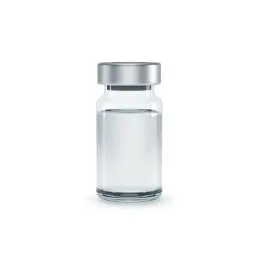
SOMATROPIN (R-HGH) 36 IU INJECTION
Drug Class: Human Peptide Hormone
Composition:
- Active Substance: Somatropin (r-hGH)
- Concentration: 36 IU/vial
Presentation: 10 Vials
Manufacturer: Stealth Labs USA
Tested in Laboratory: View Lab Report
Shipped Without Label!
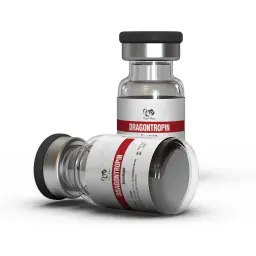
SOMATROPIN (R-HGH) 10 IU INJECTION
Drug Class: Growth Hormone Analog
Composition:
- Active Substance: Somatropin (r-hGH)
- Concentration: 10 IU/vial
Presentation: 1 kit [10 x 2 mL Vials]
Form: Lyophilized Powder
Manufacturer: Dragon Pharma
Tested in Laboratory: View Lab Report
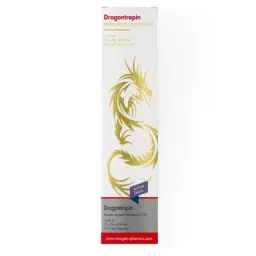
SOMATROPIN (R-HGH) 20 IU INJECTION
Drug Class: Recombinant Human Growth Hormone (r-HGH)
Composition:
- Active Substance: Somatropin
- Concentration: 20 IU per vial
Presentation: 1 kit containing 10 x 2 mL vials
Form: Lyophilized (freeze-dried) powder
Manufacturer: Dragon Pharma